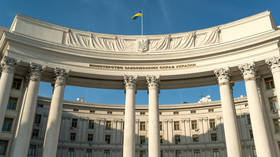Richard Wolff: US jobless totals are about to get WORSE than during the Great Depression. It's time for a RADICAL new approach

We are entering an even Greater Depression than the 1930s, with hundreds of millions thrown out of work across the world. Capitalism is a broken, unstable system that is beyond repair – but there are alternatives.
Ninety-one years after the start of the Great Depression (capitalism’s worst downturn until now), we are entering an even Greater Depression. The 1930s were so awful that leaders of capitalist economies ever since have said they had learned how to avoid any future depressions. All promised to take the steps needed to avoid them. Those promises have all been broken. Capitalism remains intrinsically unstable.
That instability is revealed in its recurring cycles, recessions, downturns, depressions, crashes, etc. They have plagued capitalism wherever it has settled in as the prevailing economic system. Now that the whole world’s prevailing economic system is capitalism, we suffer global instability. To date, capitalist instability has resisted every effort (monetary and fiscal policies, Keynesian economics, privatization, deregulation, etc.) to overcome or stop it. And now it is here yet again.
Across the world, hundreds of millions of workers are unemployed. The tools, equipment, and raw materials in their factories, offices and stores sit idle, gathering dust and rust. The goods and services they might have produced do not now emerge to help us through these awful times. Perishable plants and animals that cannot now be processed are destroyed even as scarcities multiply.
Workers lose their jobs if and when employers – mostly private capitalists – fire them. Employers hire workers when workers add more value to what the employer sells than the value of those workers’ wages. Hiring then adds to profits. Employers fire workers when they add less than the value of the wages paid to them. Firing then reduces losses. Employers protect and reproduce their enterprises by maximizing profits and minimizing losses.
Profit, not the full employment of workers nor of means of production, is “the bottom line” of capitalists, and thus of capitalism. That is how the system works. Capitalists are rewarded when their profits are high and punished when they are not.
No-one wants unemployment. Workers want their jobs back; employers want the workers back producing profitable output; governments want the tax revenues that depend on workers and capitalist employers actively collaborating to produce.
Yet the capitalist system has regularly produced economic downturns everywhere for three centuries – on average, every four to seven years. We have had three crashes so far this century: ‘dot.com’ in 2000, ‘sub-prime mortgage’ in 2008, and now ‘corona’ in 2020. That averages out at one crash just under every seven years – capitalism’s ‘norm’. Capitalists do not want unemployment, but they regularly generate it. It is a basic contradiction of their system.
Today’s massive US capitalist crisis – over 30 million unemployed and counting, a quarter of the workforce – shows dramatically that maximizing profit is not maximizing society’s well-being. First and foremost, consider that the unemployed millions continue much of their consumption while ceasing much of their production. A portion of the wealth produced by those still employed must be redistributed to sustain the unemployed. Society thus suffers the usually intense struggles over the shares of profits versus wages that will be redistributed to the unemployed. These struggles, both public – over tax structures, for example – and private – for instance, over household budgets – can be profoundly destabilizing for societies.
Redistribution struggles could be alleviated if, for example, public employment replaced private unemployment. If the state became the employer of last resort, those fired by private employers could immediately be rehired by the state to do useful social work.
Then any government paying unemployment benefits would instead pay wages, obtain in return real goods and services, and distribute them to the public. The 1930s New Deal did exactly that for millions fired by private employers in the US. A similar alternative (not part of the New Deal) would be to organize the unemployed into worker co-ops performing socially useful work under contract with the government.
This last alternative is the best, because it would develop a new worker co-op sector of the US economy. That would provide the US public with direct experience in comparing the capitalist with the worker co-op sector in terms of working conditions, product quality and price, civic responsibility, etc.
On that concrete, empirical basis, societies could offer people a real, democratic choice as to what mix of capitalist and worker co-op sectors of the economy they prefer.
The statements, views and opinions expressed in this column are solely those of the author and do not necessarily represent those of RT.













